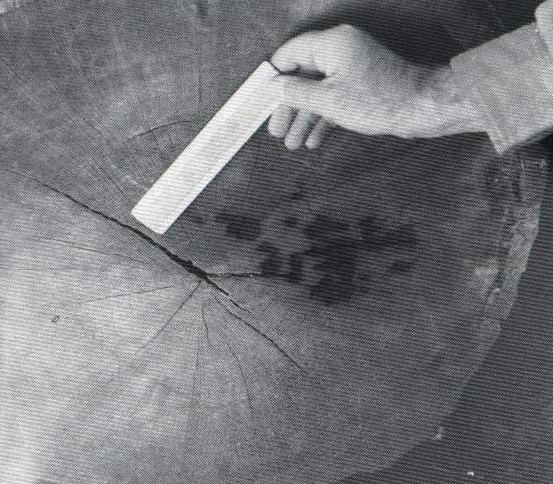
| Home |
| Tutorial |
| Photo Gallery |
| List of Defects |
| Links |
| Bark Distortion |
| Bird Peck |
| Bumps |
| Burls |
| Butt Scars |
| Butt Swells |
| Cankers |
| Conks |
| Epicormic Branches |
| Flanges |
| Flutes |
| Forks |
| Galls |
| Holes |
| Knots |
| Lesions |
| Limbs |
| Ring Shake |
| Rot |
| Seams |
| Soak |
| Splits |
| Wounds |
Significance: Ordinarily, no log-scale deduction is made for soak.
In veneer and factory logs, soak is regarded as equal in effect to stain or scattered pockets of early stage rot where the wood is beginning to stain, soften, and weaken. Where it is more severe and further advanced than this, soak becomes a veneer and factory log defect.
In construction logs, soak is ignored as a log grade defect.
In standing trees, soak is evaluated by the methods described for ring shake, heart checks, windshake, ray shake, and spider heart.

